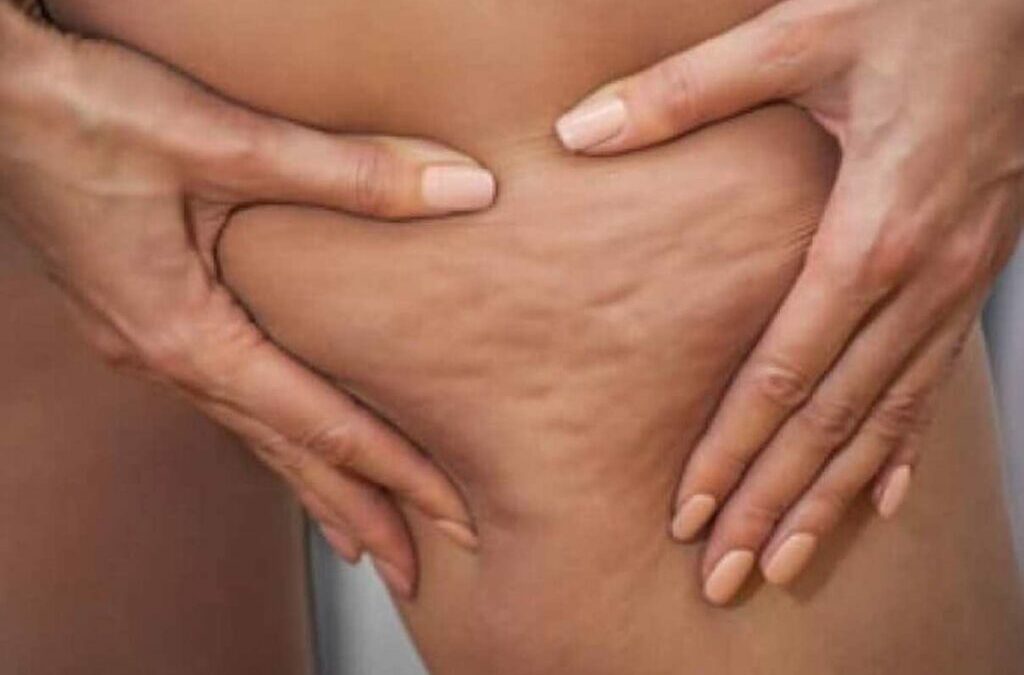Much has been written so far about cellulite, or rather about panniculopathy. In fact, over the years, the term cellulite has gradually changed, up to the more correct one, even if difficult to pronounce and remember of “edematous fibro sclerotic panniculopathy“. Often we focus only on the pure aesthetic aspect of cellulite without thinking about the fact that it is a much more complex disorder, which arises from an alteration of the veno-lymphatic circulation. That’s why it should be kept under control, and not notice its existence only at the change of season or when we are faced with the inevitable “bikini test”.
What is cellulite
Literally the term “cellulite” means inflammation of the cell, but in reality cellulite is not an inflammatory process. Cellulite is the consequence of damage, of a degeneration of the microcirculation of the adipose tissue and for this reason the more correct term of edematous-fibro-sclerotic panniculopathy (PEFS) is used. It is a skin blemish generally localized to the thighs, buttocks and hips. These areas are also particularly sensitive to the action of female sex hormones (estrogen), which tend to retain fluids and accumulate fat. It is established in the hypodermis, a predominantly adipose tissue located below the dermis.
Cellulite: the characteristics
The outward appearance of this condition is well illustrated by the term “orange peel skin“. In reality, the appearance of cellulite is different according to the different areas of the body: for example, in the inner thigh there is a “hypotonic” skin, not painful to touch; the external area of the thigh it is often associated with more or less represented adiposity; in the anterior and posterior area of the thigh the skin is pasty and in an upright position it is sagging and irregular, with an “orange peel” appearance; in the hips instead we often find some adipose accumulation. The buttocks are often hypotonic.
From the pathophysiological point of view, cellulite is characterized by venolymphatic stasis, that is: by a structural alteration of the collagen fibers, by the increase in the size (or “hypertrophy”) of the adipose cells and by water retention (or rather the stasis of the interstitial fluid (placed between the cells)); consequently the tissue is subjected to degeneration processes.
Cellulite: mechanisms of onset
Whatever the initial cause, the actual etiology of cellulite is damage to the microcirculation (veno-lymphatic), what we call “micro-vascular-tissue lesion). So at the beginning there is vascular damage; then to a circulatory stasis with consequent insufficient drainage of the interstitial fluid (the liquid placed between the cells). This favors an accumulation in loco of cellular catabolites, which in turn will determine a further recall of water to dilute the catabolites (the “waste “) accumulated.
So the fat cells increase in volume and retain fluids, while the metabolism between the intercellular spaces proceeds with difficulty. Failure to drain fluids therefore leads to stasis and a local inflammatory process. The alterations can be of various degrees, up to the rupture and laceration of cell membranes. Fats, in particular triglycerides, escape and insinuate themselves between cells and tissues to form a compact mass that completely alters the structure and metabolism of the tissues involved (lipodystrophy), creating the unpleasant “orange peel effect”.
Then the compression to which the connective tissue is subject affects both the blood vessels, blocking the metabolism and lowering the local temperature, and the nerve endings, causing pain.
Cellulite: the steps of evolution
At step 0, the venous lymphatic circulation of the skin tissue and adipocytes is normal, therefore physiological metabolic exchanges are present and there are no signs of PEFS.
Steps 1 and 2
Step 1 is a reversible subclinical stage, with no obvious signs, sometimes the subject reports the appearance of swelling (edema) or tension in the legs or only in the ankles. On the other hand, Step 2 is the stage in which the swelling and tension of the limb increase but gradually. You begin to see the classic “orange peel” skin appearance. There is an increase in the adipose panniculus and a softness of the tissues. So, the reticular fibers placed around the adipocytes increase in number and thickness starting to alter the functioning of the microcirculation. Moreover the skin begins to lose elasticity.
Steps 3 and 4
In step 3, fibrosis begins and the feeling of heaviness in the limbs increases. The first telangiectasias (varicose dilations of the capillary blood vessels of the dermis) begin to appear. On palpation, small nodules are perceived, a further increase in the adipose panniculus and the softness of the tissues. The nodules and collagen fibers form a kind of texture that tends to hinder the metabolic exchanges of the tissue; some areas of the skin are cold and palpation can cause pain. Instead, Step 4 on the other hand, is the stage of overt fibrosis. The legs are sore to the touch, with some manifestation of vascular insufficiency. At this point, the number, the volume and the tension of the nodules and of the adipose panniculus increase, becoming easily palpable. This stage tends to evolve into irreversible fibrosis.
Finally, step 5, which is that of sclerosis and fibrosis. The manifestations of venous insufficiency are now evident, the limbs are constantly painful, the skin appears cold, pale, painful and hard on palpitation due to the presence of large nodules.
Cellulite: the causes
Cellulite is not only the prerogative of the overweight person: there are also thin women with cellulite. The causes, which can be single or present together, can be:
1. vascular causes
in the legs the venous blood is drained by a set of venous vessels. The superficial ones, such as the large and small saphenous veins, are equipped with valves that prevent the blood from falling down due to the presence of gravity. On the other hand, the system of deep vessels (tibial, popliteal, femoral, iliac vein) is devoid of valves. So, the interstitial fluid and therefore the cellular catabolites are drained by a thin network of lymphatic capillaries that will flow into two large lymphatic stations: the popliteal and inguinal one. At this point it is clear how any alteration of the valves, an overload or an obstacle can cause insufficient venous return and, like any compression exerted on the lymphatic network, can induce a stagnation of liquids;
2. endocrine causes
many hormones (especially thyroid, ovarian, pituitary and adrenal) have a fundamentally important action on fat metabolism, fluid and electrolyte regulation. Thyroid: hypothyroidism, for example, causes a slowdown in the body’s metabolic processes including those relating to lipolysis; ovary: It produces estrogen, which if present in excess determines a reduced elimination of sodium in the kidney with consequent water retention due to the fact that each molecule of sodium binds to a molecule of water. The increase in water increases the pressure in the interstitial fluid causing an obstacle to the circulatory outflow. Another effect of estrogens is to make fatty acids more available which are deposited in the form of triglycerides in fat cells;
3. metabolic: the main ones include diabetes and dyslipidemias;
4. postural
posture is the correct upright position of the body; postural anomalies linked for example to flat foot problems or valgus knee problems can lead to alterations in venous return; not only! even when you remain seated for too long with your legs crossed or for too long in an upright position without walking, venous circulation is impeded;
5. supply
an unbalanced diet towards an excessive consumption of foods of animal origin containing saturated fats, sugars and salt, favors it. On the contrary, the intake of foods of vegetable origin containing water, vitamins, minerals, vegetable pigments and fiber such as fresh fruit and vegetables and legumes is increasingly scarce; these favor the turnover and counteract free radicals. If we look at nutrition, the first two typical signs of an unhealthy diet are constipation and water retention. The ideal diet? proteins should not provide less than 12% of total calories; the intake of rapidly absorbed carbohydrates must be reduced and at least one fifth of the fats must be of the polyunsaturated type. In addition, you need to drink plenty of still water. Finally, a truly balanced diet requires that the quantities of potassium consumed daily are greater than the quantities of sodium.
Cellulite: effective natural remedies from Erboristeria Como
It is with satisfaction that our herbalist can tell you about two of our 100% natural preparations for cellulite, effective natural remedies consisting of a gastro-protected tablet supplement and an anti-cellulite gel. They have been formulated and prepared according to the latest most promising scientific studies and which have also been based on practical evidence from professionals in the sector.
Cellulite effective natural remedies: a supplement in tablets based on bromelain and centella
Minacell gastroprotected tablets contain a synergized complex based on high dosage bromelain (tit. Min. 2500 GDU / g) and centella asiatica titrated in total terpenes by HPLC method; its goal is to promote the draining function and the trophism of the microcirculation, it is suitable for vegans, naturally lactose-free and gluten-free. In MinaCell:
- bromelain is an enzyme with a proteolytic, anti-edema, anti-inflammatory action, which improves the functionality of the microcirculation. Here the benefits recognized to Bromelina: “Beneficial Properties of Bromelain”;
- centella improves the permeability and elasticity of vascular tissues, alleviating the symptoms of venous insufficiency.
According to the study “Total Triterpenic fraction of Centella asiatica in chronic venous insufficiency and in high perfusion Microangiopathy”, L. Incandela et al, the total triterpenic fraction of centella is effective in improving the alterations of the venous wall in chronic venous hypertension and in protecting the venous endothelium. It improves the synthesis of collagen and other tissue proteins, modulating the action of fibroblasts in the venous wall; stimulates the remodeling of collagen in and around the venous wall. In this way, it would allow the recovery of the permeability and elasticity of the tissues, alleviating the symptoms of venous insufficiency.
Here The study
The synergistic combination of high-dose bromelain and titrated gotu kola proved effective in promoting not only the draining function but also the trophism of the microcirculation in a multicenter study conducted by 45 dermatologists. Our natural remedy for cellulite MinaCell tablets originates from a study by Italian researchers, with Andrea Romani as the first signatory, published in the Journal of Plastic Dermatology), entitled: “Multicentric study on the effectiveness of a supplement based on bromelain and triterpenes from Gotu kola in the treatment of cellulite “. This study was conducted by 45 dermatologists and distributed throughout the country. Each dermatologist had to select 10 female patients.
This study was conducted by giving the selected patients a treatment for two months of a supplement based on bromelain and gotu kola, favoring the draining function and the trophism of the microcirculation. The following were found:
- dermo-aesthetic examination: it had to take into account the localization of cellulite and the presence or absence of the following skin signs: roughness, edema, telangiectasias and / or micro-varicose veins, varicose veins, trophic changes and stretch marks;
- subjective symptoms often associated with cellulite: paraesthesia, numbness of the lower limbs, a sense of heaviness, cold feet, nocturnal and diurnal cramps;
- objective detection of the presence or absence of: elasticity, pastiness, pliability, fine granularity, micronodules, macronodules, pain, flaccidity, pallor and hypothermia.
Here are the results of the study:
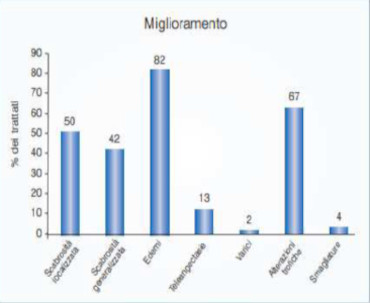
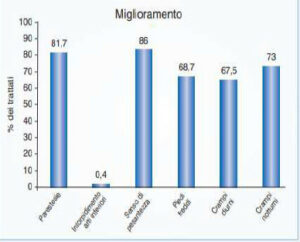
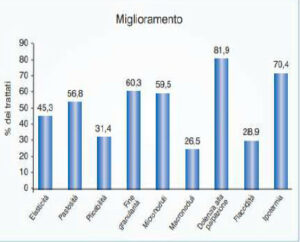
Cellulite effective natural remedies: a phenomenal anti-cellulite gel
This fantastic anti-cellulite gel, developed in collaboration with the Italian phytopreparators association, is the result of a series of valid and in-depth studies in order to treat the aesthetic aspect at 360° w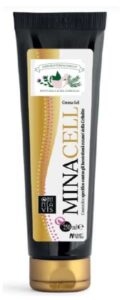 ith the help of only vegetable ingredients. Our anti-cellulite gel consists of:
ith the help of only vegetable ingredients. Our anti-cellulite gel consists of:
-
a liposomal complex based on caffeine, L-carnitine and sodium deoxycholate:
this complex easily penetrates into the dermis layer, stimulating the reduction of fat and ensures an effective reduction of the symptoms of cellulite. Efficacy demonstrated in vitro and in vivo. Little known but important in this formulation, there is sodium deoxycholate. It is the sodium salt of deoxycholic acid, a bile salt produced by the liver together with bile acids. This acid has the ability to dissolve excess fat by destroying fat cells. Sodium deoxycholate is used in the aesthetic treatment known as Intralipotherapy. The technique would make it possible to eliminate the unsightly excess fat pads, obtaining a remodeling of the body and face without having to resort to surgery.
-
aescin and beta sitosterol phytosome
it is a complex of escin with beta sitosterol and phospholipids with high bioavailability and better skin tolerability. The assets are conveyed to the action site and released gradually. It acts at the capillary level by modifying vascular permeability and favoring the tone of the vascular muscle layer. Regarding this active: 43 volunteer women, with chronic venous stasis and cellulite in various regions of the body, were treated with a cream containing aescin beta-sitosterol phytosome applied once a day for 30 days: here are the results:
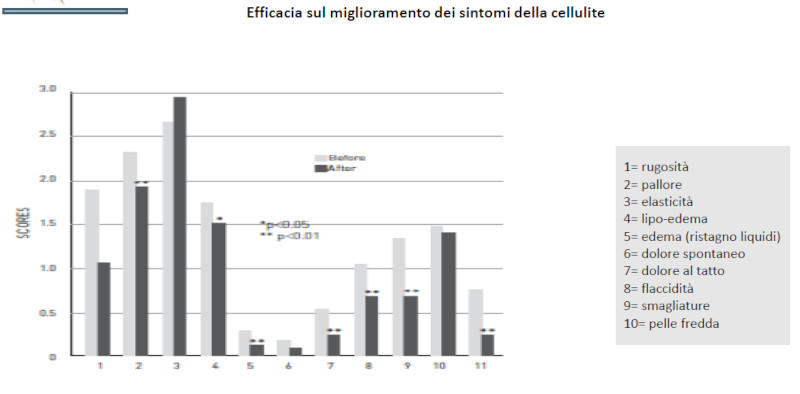
- centella: stimulates the production of new collagen fibers within the blood vessel wall; these fibers make the vascular part more elastic and toned, thus helping to reduce the accumulation of liquids and the symptoms of venous insufficiency.
- menthol and menthyl lactate: for an immediate sensation of freshness, stimulating the circulation.
Cellulite and gemmotherapy: deep drainage
One of the bud extractives of choice is the bud extract of betula pubescens, useful for renal drainage and to stimulate the endothelial reticulum system (see our post here). Renal drainage supports and strengthens detoxifying renal functions, increasing diuresis and elimination of catabolites, electrolytes, drug waste and others. Birch pubescens also facilitates the elimination of crystalloid toxins, relaunching the renal and hepatic metabolism, useful in case of cellulite and disorders of the lymphatic system. It could also be associated with the tincture of pineapple stem (rich in bromelain, stimulates lymphatic drainage) or dandelion (contains inulin) or with centella tincture (for circulation).
Among the other bud extracts for cellulite, usually, but depending on what you want to achieve, we can recommend birch sap and horse chestnut (draining blood circulation) or birch sap in association with rowan and chestnut (stagnation of liquids).
Follow us on our Facebook and Instagram channels
ALL RIGHTS RESERVED, THIS TEXT CANNOT BE REPRODUCED WITHOUT THE EXPRESS AUTHORIZATION OF ERBORISTERIACOMO.IT
The information contained in this site is presented for informational purposes only, in no case can they constitute the formulation of a diagnosis or the prescription of a treatment, and do not intend and must not in any way replace the direct doctor-patient relationship or the specialist visit. . It is recommended that you always seek the advice of your doctor and / or specialists regarding any indication reported.

